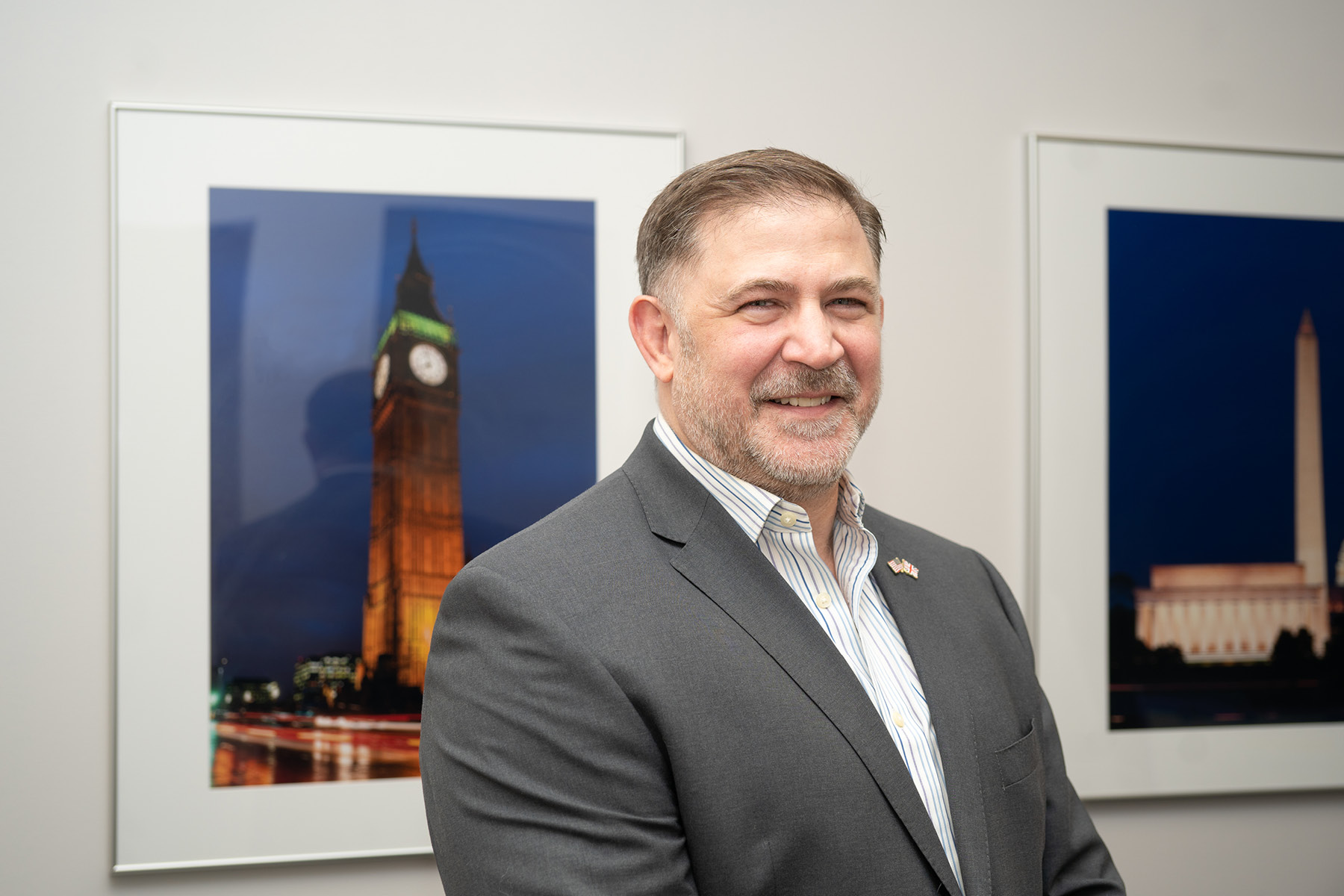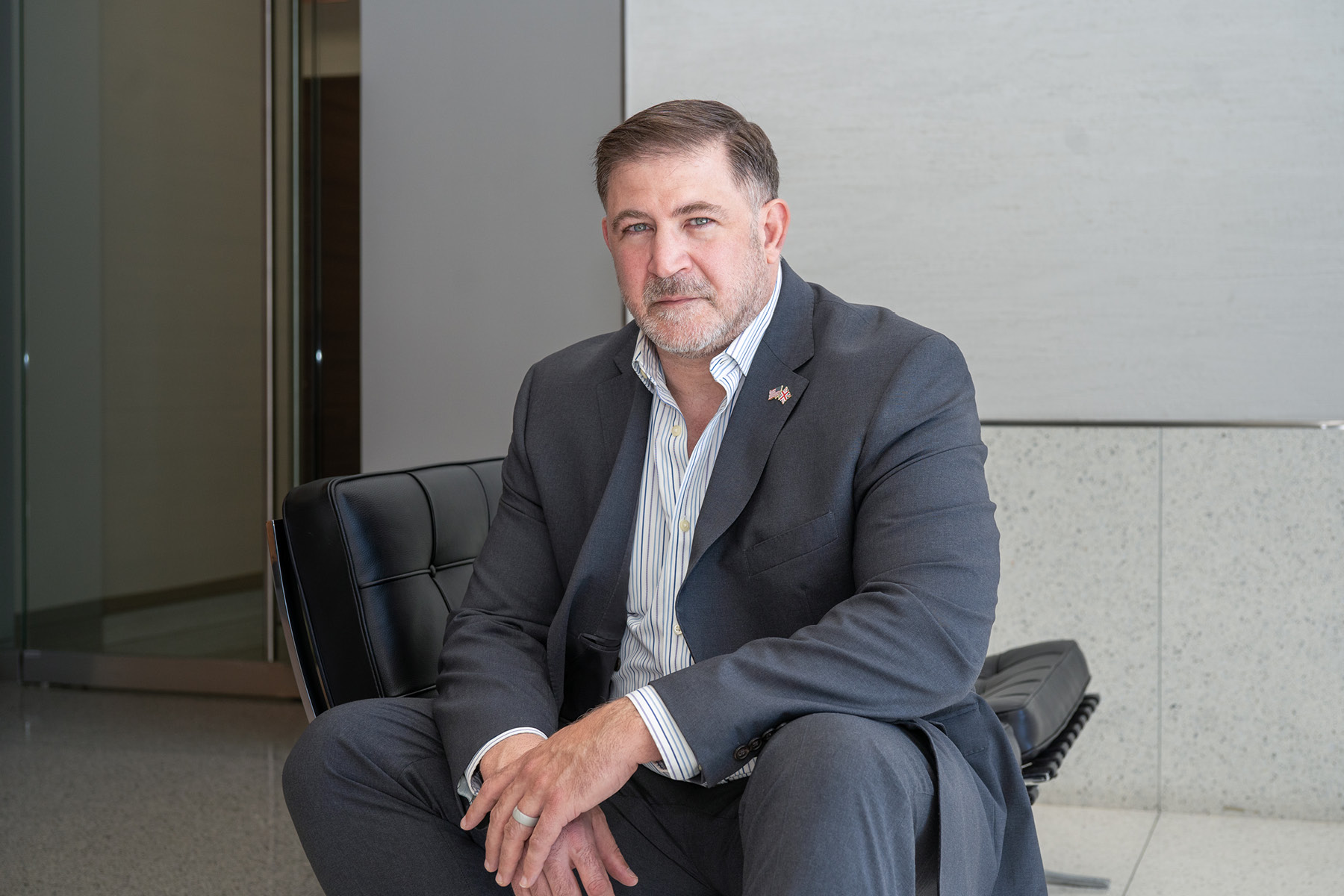Language
You can read the magazine in one of the following languages
His background in the Marine Corps means CEO of BT Federal Mike Barthlow understands better than most the importance of making sure that an organization has a survival plan.
“As a US Marine, one of the things that you work really hard to do is to make sure that your organization can survive beyond yourself, that the organization can run itself. Because, unfortunately under combat scenarios, sometimes you may no longer be around, and that’s the reality of it,” he tells The CEO Magazine.
This is applicable in the world of business as people leave organizations and take their knowledge with them.
It’s a predicament Barthlow found himself in shortly after taking up his position in January 2022, when he realized that a complete overhaul of the leadership team was required. He appointed the role of Chief Operating Officer and went on the search for a Chief Technology Officer.
“I finally found an industry veteran who could take on that role as a strong leader and a strong technical thinker and executor of plans,” he shares.

The next appointment was a Chief Information Security Officer, who they found in the Defense Information Systems Agency, along with a new Vice President for Sales for the Department of Defense, retaining the existing Vice President of Civilian Sales.
“We had a complete reset of the C-suite basically,” Barthlow says. “The idea was to get world-class talent into the right places, because we’re a relatively small team, but you could almost think of us as a special forces team within the Americas because we represent the BT powerhouse within the North American market in defense and federal agencies. That’s US$20 billion plus of market potential.”
But with that kind of exodus comes a loss of tacit knowledge which can place an organization such as BT Federal in jeopardy. Fortunately, Barthlow had the expertise required to future-proof it from any further losses of this kind.
“You need to build an organization that has clear understanding of what the missions are, how that mission decomposes into their trade space, into their workspace, and make sure that their training and resourcing is appropriate, make sure that they have the tools that they need,” he explains.
“These are all the things that I’ve been working on over the past year to pull that tacit knowledge out of the team that’s remaining and put that into a more structured framework for execution.”
One of the ways he’s been doing this is through the use of a model developed by Andreas Kramvis, CEO and Chairman of Honeywell Specialty Materials, entitled the Business Decision Week.
“That’s focused on four things: improving your capability, enhancing competitiveness, deep learning on things that people need to be aware of and then deep coordination,” Barthlow explains.
Every month since he joined the company, BT Federal now has a week-long or a three- to five-day business decision week with Barthlow describing the impact as “amazing.”
“It’s accelerated change within the organization, it’s impacted culture, it’s impacting process,” he enthuses. “We’ve accelerated process improvement, process implementation, new tools, hiring. I mean it’s done. It’s been an amazing tool to deploy. I can tell you from now on, any company that needs this kind of transformation, this approach will be one that I’ll take.”
Barthlow also frequently taps into his past experience both in the Marines and team sports to inspire and motivate his team.
“I was a college football quarterback. I was a Marine officer, so I have a lot of team orientation in how I run things,” he explains. “It’s team over self. The business bible I use for this model is Patrick Lencioni’s The Ideal Team Player. The book focuses on the concepts of hungry, humble and smart.”

“I can quite frankly say that, as I came into the organization, I saw some not so humble behavior and I saw some not so smart behavior,” he reflects. But rather than calling out each instance individually, he shared his expectations with the entire team.
“Then the team doesn’t feel attacked, but they’re then corrected in a positive way,” he says.
That helps to build a firm foundation of trust, another critical part of Lencioni’s model, he continues.
“If you look at the second phase of his model, the five dysfunctions of the team, if you don’t have trust, the rest of it just doesn’t work. Trust then communication, commitment and it all flows up to accountability and results.”
It’s not the only well-thumbed tome on his reading table. He also likes to refer to Extreme Ownership by former Navy Seal Jocko Willink, applying its key concepts to BT Federal.
“Being a former Marine officer, I obviously resonate with him, but it’s applicable to any business context,” he says.
When Barthlow joined BT Federal, he was fresh from seven years of building a business with Cubic Corporation – a period of almost US$1 billion of acquisitions for the firm with many of those part of his own portfolio.
“I really enjoyed the growth journey. I really enjoyed taking something that I considered either a diamond in the rough or something that maybe had stumbled but had potential and needed to be turned around,” he says. “And so when I looked at BT Federal, I saw a tremendous amount of potential that was either unknown or not yet unlocked, and I think that really drew me.”
Barthlow had also served in Iraq and Afghanistan with the husband of the Chairman of the Board, so overall, there was a familiarity which inspired him with confidence about making the move.
At the same time, there was a fresh perspective to the task at hand which excited him. He would be taking on the mission from a different perspective – a purely commercial telco perspective – while unlocking the power of BT Federal.
“The puzzle pieces came together well in terms of what the opportunity was, who the people were, who the customers were, along with my strengths and experiences,” he reflects.
With his highly skilled team in place, attention turned to developing a plan of action. What they came up with was built on three main pillars: global, trusted and innovation.
“There’s a fairly significant initiative within the BT corporation to drive a consolidated global network fabric that makes a cloud environment very easy,” Barthlow explains, highlighting its voice-switch network as the largest and most successful in the world.
“Global will be the strongest influence of our growth over the next 24 to 36 months,” he predicts. “We’ve done quite a bit of global work for the government to date, but we are expanding that and taking a couple of different new avenues of approach.”
With cybersecurity such a fast-growing area, BT Federal’s 70-year pedigree in the field makes it incredibly trusted, the second pillar of the strategy.
“A decision several years ago to offshore the security operations centers in the US has made it very difficult for the federal team to deliver cyber services to the US federal government,” he says. “One of the major initiatives I’m putting forth is to reestablish a footprint in the US to deliver those managed security services to the federal government.”
The company is already doing this on a small scale, insourcing some of the functions that previously had been outsourced. Much of the work is being done at Adastral Park, a US$12 million research and engineering facility that is a joint project between the University of Suffolk and BT.
“One of the major innovations that’s going on is a product or a solution set, I should say, called Eagle Eye,” he shares. Although still embryonic, Barthlow sees great promise for the system.

BT has also integrated Zscaler cloud security into its global network as well as a multi-cloud technology solutions company.
“The idea is that you are federating or integrating key cyber tools and then you’re bringing them together in a ringside seat that’s also informed with all of this global cyber intelligence so that the output to that is insights to the CISOs or to the stakeholders in that organization and that they now can take preemptive actions to prevent a cyber event rather than having to react to a cyber event,” he explains.
The third pillar is innovation, but doing it in a way that is applicable specifically to a federal customer, Barthlow stresses, and will act as the rocket fuel for the other two pillars.
“The idea would be that BT is delivering all of these things to the global market,” he says. “What can we do to twist it a certain way or pivot it a certain way in order to make it consumable and attractive to a federal customer?
”And so that’s where a lot of our innovation comes, because of all of our experience in the 25 years in the defense and civilian agency world and most of my C-suite has that similar background,” he continues.
In the last year, BT Federal has won a fairly significant award with the State Department assisting with the modernization of infrastructure for embassies worldwide. The deal is reportedly worth up to US$1.9 billion to the company over a 10-year period.
It is also heavily involved in another ongoing initiative, the network modernization of the Federal Aviation Administration (FAA) with a focus on outside the contiguous United States.
“As the FAA needs to modernize that network, we are also the best equipped to do that. I think that’s a very important distinction,” Barthlow says.
While the company has major framework agreements in place that give it the opportunity to bid on US-based projects, he cites competition from “low-price commodity providers of infrastructure just down the street” as a deterrent.
“I’ve focused the team on where our strengths are, which is on outside the US and then if there is a global voice network, we want to bring that to the US customer but not try to do so much locally,” he explains. “We are typically the dominant player outside the US. We have relationships that are long-standing as well as immense depth and breadth.”
It’s a unique value proposition that is resonating with the market.
Although global will be the main thrust for BT Federal in the coming years, Barthlow expects its security business to “percolate along the same timeline but at a different rate.”

“We don’t have many telcos with the cyber pedigree that BT does,” he says. “Often you’ll have a lot of cyber companies that are either integrators or cyber specific, or that’s their only focus. But because we have such a large global network, our cyber insights become even more valuable because we have such a broad presence.”
In a landscape where suppliers often become competitors over time, trading competencies has become a crucial way of doing business, according to Barthlow, who offers cloud infrastructure partnerships as a prime example of how BT Federal rides such waves.
“The idea is that our cloud infrastructure providers have a lot of infrastructure all over the world. It would take us a lot of time and a lot of money to build that,” he says. “We have a lot of security prowess all over the world. It would take them a lot of time to build that. And so there’s a bit of a trading of the horses to create a global partnership that is stronger than anybody else in the market.”
It‘s an approach BT Federal is employing across the business, enabling it to stay at the forefront of the industry’s latest trends and to help steer them, with Barthlow highlighting BT as the company’s major partner.
“It’s really multifaceted, both internal and external partnerships are very critical and it’s actually one of our key performance indicators for the year is how do we best leverage those partnerships and how to better articulate how we’re going to execute within those frameworks,” he says.
Now, as the company enters its next phase, unlocking value is the main focus.
“I want our customers to know, I want the market to know that we are here,” he states. “I think that up until now there’s been a very low noise level, a low signal level about the value that BT Federal can bring to the market. And I want folks to know that we’re here to unlock that value for the market and to give them access to the entire footprint, where applicable, of the BT enterprise.”
